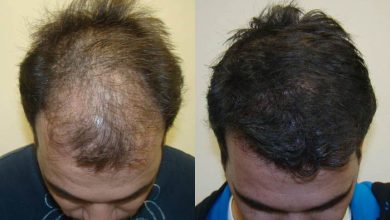Most Effective Skin care Regimen for Dry Skin

Be it dry, oily, normal or problematic every skin type has its demands and special requirements. Every woman must be well-aware of the demands of her skin. If you want to know which is the most effective skincare regimen for dry skin then you are in the right place on the right time. We are here to help you fight against the biggest problems of dry skin. Below we’ll represent dermatologists’ top tips for dry skin.
Take Baths and Have Shower the Right Way
Everything starts from the way you treat your skin and the way you choose to have shower or take a long bath. When your skin is dry you must make sure you close the bathroom door while having the bath or shower. Use warm water instead of hot. Start limiting your time spent in the water from to 5 or 10 minutes. Use gentle cleansing means instead of harsh items and chemical products. Pick up cleansing products that also have moisturizing effects after baths and showers or apply moisturizer immediately after washing.

Use Moisturizing Creams instead of Lotions
Body lotions and toners usually have lighter effects on the skin than creams. There are both face and body moisturizing creams special for dry skin. They work better and moisturize your skin deeply. The result is surely touchable after several uses. You can also use ointments as they are more effective and less irritating than lotions. Choose a cream or ointment that contains an oil such as olive oil or Jojoba oil in order to soothe dry skin. Other moisturizing ingredients to look for are as follows; lactic acid, urea, hyaluronic acid, dimethicone, glycerin, lanolin, mineral oil, and petrolatum. Apply hand cream after each hand washing to make your hands softer, smoother and hydrated.

Wear Gloves
Our hands are the first that indicate that we have dry skin. They easily become harsh when we go outside without gloves in winter or when we use chemical cleansers and other substances without wearing gloves beforehand. Opt for non-irritating and soft clothes made of cotton or silk and choose gloves that are made of natural clues. Don’t forget to wear gloves during cleaning or gardening. Visit your dermatologist when you notice that your hands become reddish or drier even when you wear gloves.

Use Lip Balm
When taking care of our skin we often forget about our lips. Women with dry skin know how hard it is to look attractive when lips are dry and dull. In order to make them luscious and luminous you should use lip balm instead of colorful lipsticks. Of course, there are high-quality lipsticks that contain moisturizing components but you’d better opt for natural lip balms than chemical lipsticks.

Use Unscented Skin Care Products
Although many skin care products have pleasant scent, they usually contain alcohol, fragrance, retinoids, or alpha-hydroxy acid (AHA), which are all irritating for dry skin. Avoid using products such as deodorant soaps if you want to help your skin retain its Natural oils and stay subtle. Odd scents can make it sensitive and then require more care. Don’t forget about wrinkles. You can also use the best night cream for wrinkles.
Related Articles:
Natural Essential Oils for Skin Care That Will Improve Your Skin
Vitamins for Skin Acne and Skin Care Problems
Natural Liquid Vitamins for Skin Care
Vitamins for Skin Care Use Every day of Life
Top 10 Skin Care Essentials Products for Healthy Skin
10 Benefits of Fruits Peels For Health And Skin Care
Night Time Skin Care Routine December 2016
Summer Skin Care – Some Important Tips And Tricks
These Vitamins Can Replace Your Cosmetics & Skin Care Products
By : Natural Health News




